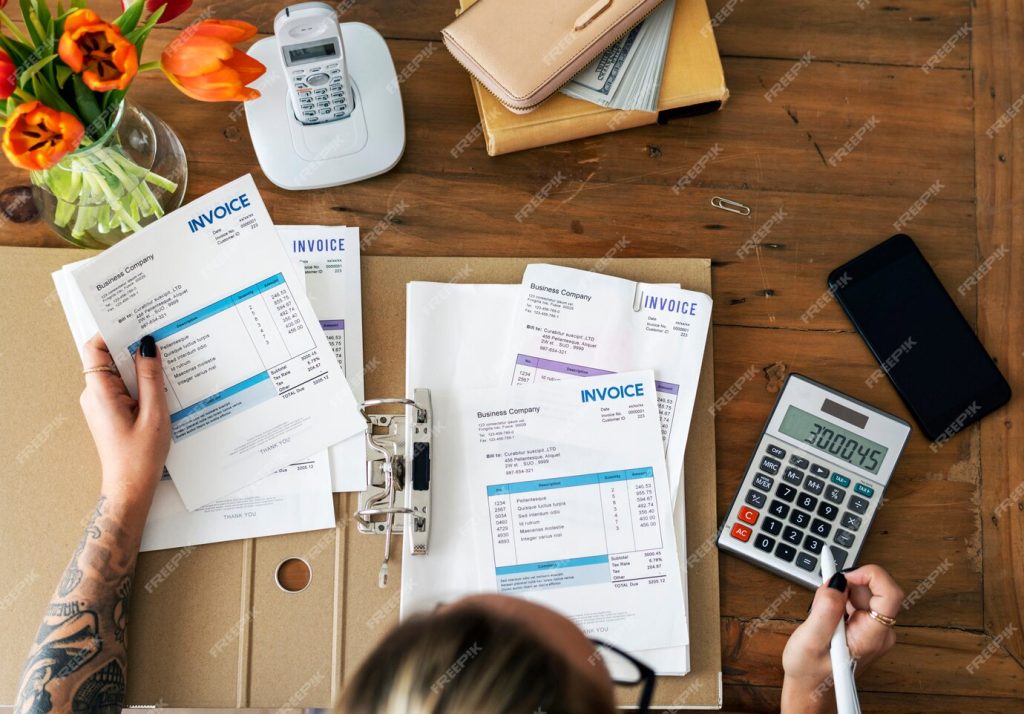As your contracting enterprise expands, so too does the scale of your projects. What once took a few days to conclude can now span weeks, months, or even years. Consequently, the once adequate pay-as-you-go system becomes insufficient as large and extended projects become the new standard. Adjusting to this shift in scale can be challenging, particularly in relation to billing and payment collection.
The solution? Progress invoicing.
If progress invoicing or progress billing is a new term for you, don’t worry. This article will provide a comprehensive overview of this billing method. We’ll explore what progress invoicing entails, when it’s the ideal billing solution for your business, and how it can enhance your cash flow management. So, let’s dive in.
Understanding Progress Invoice
A Progress Invoice is a billing strategy that divides a project’s total cost into several manageable parts. Rather than paying the entire fee upfront, customers make a series of partial payments at identified project stages – we call these ‘milestones.’
So, how do we determine these milestones? It will largely depend on the nature of the project and your specific business practices.
Consider, for example, a project that involves remodeling a bathroom. The milestones may be aligned with substantial stages of the project, like the demolition process, framing construction, installation of drywall and insulation, and other significant steps up to the final completion of the project.
Or, consider a new residential project with a six-month timeline. Here, the milestones could be time-based, with payments due at the start, mid-way through, and upon completion of the project.
Upon initiating a project, you and your client will agree on a timeline, the milestones, and the payment due at each step. It is also common for service providers to request an upfront deposit before work commences.
The Distinctiveness of Progress Invoicing
What precisely sets progress invoicing apart from other billing methods? It essentially carves out a compromise between demanding full payment at the outset and billing only upon project completion.
Under a system of upfront billing, a client is required to make full payment in advance. This can be beneficial in certain scenarios, such as when dealing with a new client or one with a less-than-stellar credit history.
In contrast, billing at the end of a project implies that all costs are borne by the service provider until the invoice is settled. This approach is quite common in short-term projects or ones that do not necessitate the procurement of materials and resources.
However, when it comes to larger, more complex projects spread over multiple stages, progress invoicing emerges as a sustainable solution. It ensures a steady cash inflow, thereby contributing to the overall financial health of your business.
When is Progress Invoicing Applicable?
Progress invoicing proves to be an optimal choice for extended projects or those necessitating significant investment in costly materials. It not only establishes a systematic process for consistent cash flow but also enhances transparency in customer communication. By collaboratively defining project milestones and associated payments, both parties develop a shared understanding of the project timeline and expenditures, thereby fostering trust and minimizing potential disputes.
Industries that Benefit from Progress Invoicing
A wide variety of industries commonly employ progress invoicing due to its versatility and practicality. Within the construction realm, professionals such as general contractors, framers, drywall installers, plumbers, electricians, painters, masons, welders, and finish carpenters routinely use progress billing. However, the use of this invoicing method isn’t confined to the construction industry.
There’s a broad spectrum of high-value service providers that can reap the benefits of progress invoicing. Web developers, interior designers, and a myriad of freelancers—ranging from writers and photographers to art designers—would find this billing approach to be particularly advantageous.
Advantages of Implementing Progress Invoicing
Understanding how progress invoicing operates and who can benefit from it paves the way for appreciating its advantages. Let’s delve into the perks this billing approach offers.
Enhanced Cash Flow Management
Progress invoicing can significantly mitigate the financial challenges commonly faced by businesses involved in large-scale projects. There are three primary ways this invoicing strategy can facilitate cash flow management.
- Initial deposits: Requesting an upfront payment can cover material costs, easing the burden on your resources.
- Predictable payment schedule: Knowing when to expect payments allows for more strategic planning in work scheduling and material ordering, aligning with your cash flow.
- Prompt identification of client financial issues: If a client fails to make a payment as planned, you can suspend work until their payments are up-to-date.
Superior Project Management and Expense Tracking
For anyone experienced with projects that have overrun in terms of time and budget, the value of efficient project management is evident.
- Project milestones: The milestones integral to progress invoicing serve as a motivational tool for the team, encouraging adherence to the project timeline.
- Expense tracking: Complicated projects often involve multiple tasks and workers, making it simpler to track and monitor expenses at each stage rather than waiting until the end. Early detection of project overruns in terms of time or budget becomes easier.
Increased Transparency and Accountability
Drafting your proposal with defined milestones and a progress invoicing schedule helps clarify the scope of the project and the timeline for completion.
- It enables clients to monitor progress and offers a transparent representation of how you intend to fulfill your commitments.
Boosted Customer Satisfaction
Progress invoicing can lead to an improvement in customer satisfaction in a number of ways:
- Structured payment: Offering multiple, defined payments provides financial flexibility for clients and eliminates the shock of a single, large bill.
- Lower financial risk: Clients only pay when milestones are achieved, decreasing their financial risk.
- Clearly defined milestones: Well-articulated milestones can help reduce or even eliminate disputes, as clients have a clear idea of what to expect.
Implementing Progress Invoicing: Step-by-Step Guide
First-time implementation of progress invoicing requires some initial groundwork. Once this is set up for a single client, it becomes a template for future usage. Here’s how you can get started:
- Identify Project Milestones: The milestones will be project and industry-specific. Developing a project estimate may aid in identifying these milestones.
- Decide on the Number of Payments: The appropriate number of milestone payments will hinge on the project’s cost and duration. Begin by examining the total project cost, then determine the milestones that will initiate an invoice. Consequently, you can decide whether to divide the payments into fixed amounts or percentages of the total. If you’re in need of a simplified payment process, Invoice Simple could be a solution.
- Discuss Your Proposal with Your Client: Your client will either agree with your set milestones and payment schedule or propose changes. If necessary, adjust the proposal. Obtain your client’s signature on the final proposal.
- Invoice According to Your Payment Schedule: Utilizing an online invoice generator like Invoice Simple can simplify and automate this process.
Conclusion
Progress invoicing is an invaluable tool that can significantly enhance your business’s cash flow management, project management, and client relationship quality. It ensures a steady cash inflow while keeping the project on track with defined milestones. Additionally, it fosters a sense of transparency and accountability, thereby boosting customer satisfaction.
As an essential part of streamlining your invoicing process, consider utilizing tools like Invoice Simple and a well-prepared sample receipt template Word to manage your invoices efficiently. Adopting progress invoicing could herald a new chapter of financial stability and customer satisfaction for your business.






